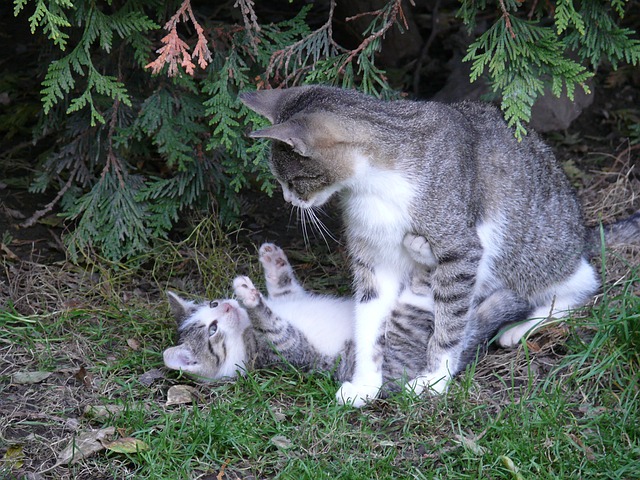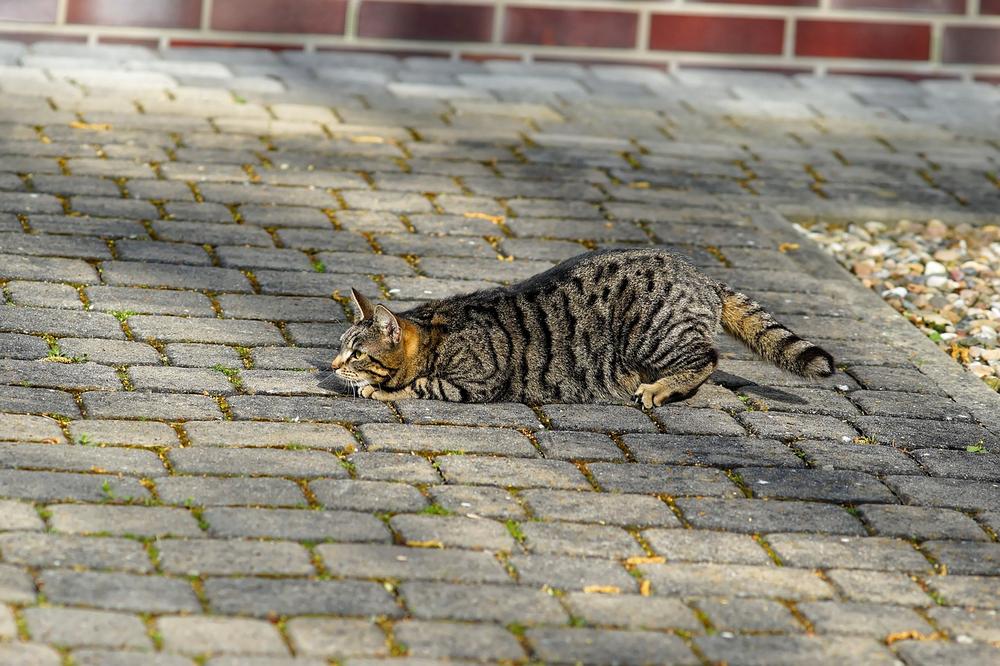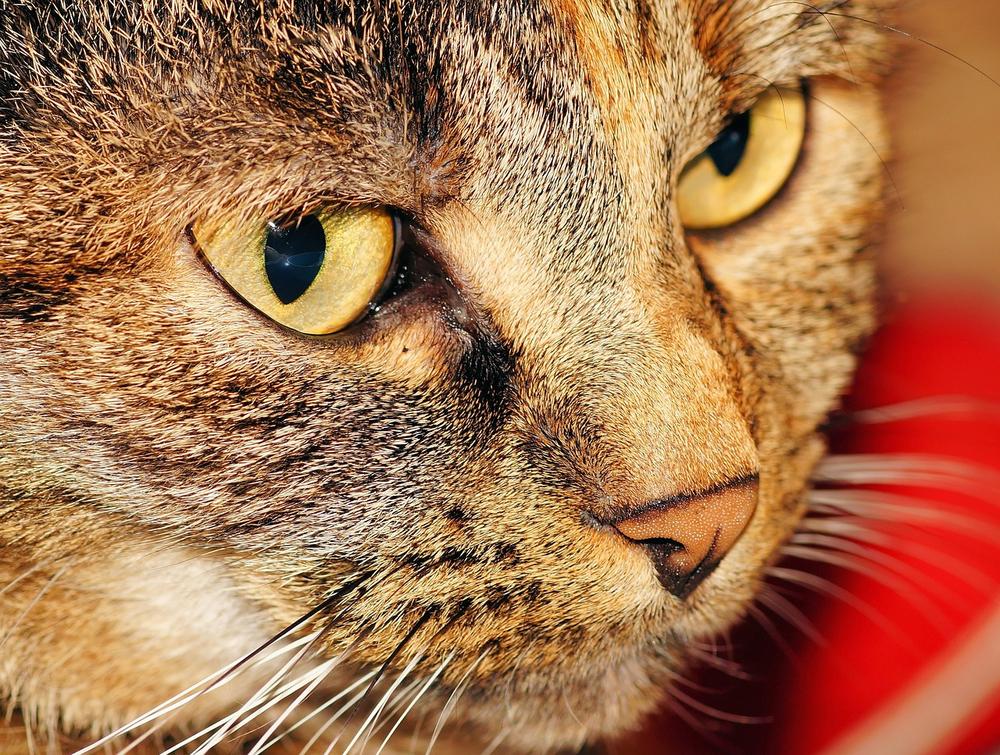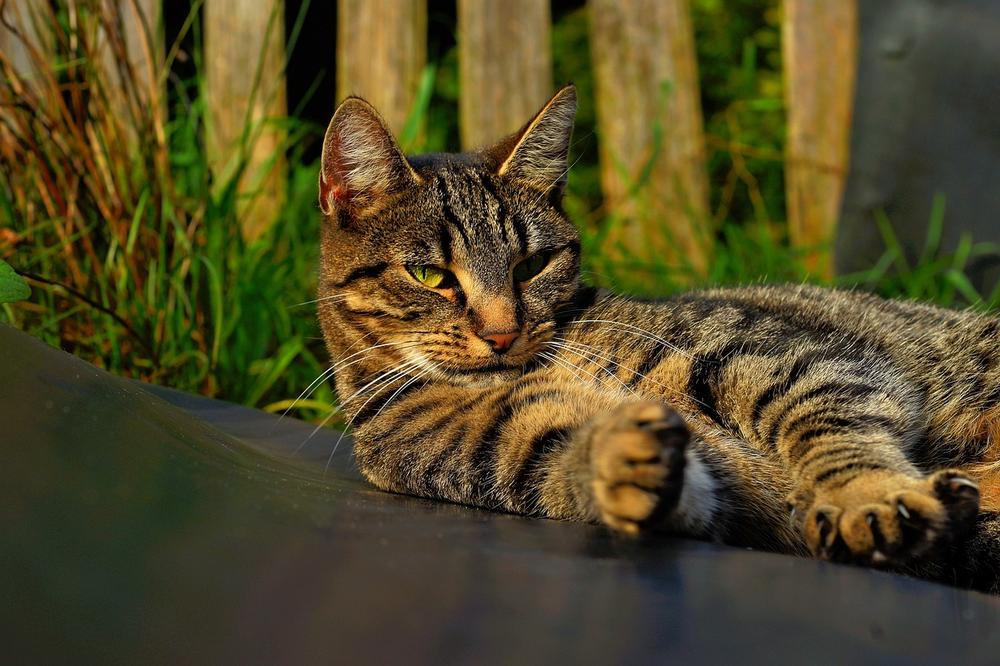Why Do Female Cats Scream When They Mate? (Revealed)

Look, here's the truth:
Female cats screaming during mating is like nails on a chalkboard.
It's a torturous symphony that leaves you tossing and turning in bed at night.
But fear not, because in this guide, I've got the solution to silence the screams.
Let's dive in! 😺
Why Do Female Cats Scream When They're in Heat?
Female cats scream when in heat to assert dominance, facilitate ovulation, and attract male cats. These vocalizations can occur before mating and are triggered by the presence of a barbed penis. Understanding this behavior helps ensure the well-being of your cat during this period.
Female cats make loud noises when they're in heat for a few reasons, and it's not just random.
They scream to show dominance and help with ovulation during the mating process.
In other words, it's an important part of their reproductive behavior.
But here's the kicker:
These screams don't only happen when they're in heat.
Female cats also experience behavioral changes and increased vocalizations during this time, including screaming during or after copulation.

These vocalizations serve different purposes, like attracting male cats with trilling calls that are pretty irresistible. Now, hang on a sec – there are several factors that determine when a female cat goes into heat.
It's not just about hormones; daylight, weight, age, health, and breed all play a role.
But wait, I've got something really interesting to share with you: those loud cries from female cats can start even before mating happens.
How is that possible?
Well, get this:
The presence of a barbed penis during mating can actually trigger the screaming. Surprise!
This behavior is crucial for both ovulation and pregnancy, as it shows dominance, stimulates male arousal, and helps induce ovulation in females. See, understanding why female cats scream when they're in heat can help you handle the situation better and ensure the in essence health and wellness of your furry friend.
Main points I'll expand upon further down this article:
- Female cats scream during mating due to pain and hormonal shock.
- Mating for female cats can be painful and stressful.
- Male cats' spiked reproductive organs and love bites cause pain.
- The barbs on the male cat's penis rake the female's reproductive tract walls, stimulating ovulation.
- Providing a calm environment and distraction techniques can ease discomfort.
- Female cats may attack the male after mating and require alone time.
- Signs of pregnancy include a bigger appetite and swollen mammary glands.
- Cat pregnancies last about two months, and most do not require assistance.
- Female cats display various post-mating behaviors like grooming and attacking males.
- Spaying and neutering are essential for preventing mating-related behaviors and overpopulation.
But here's the thing - why do female cats display such intense reactions during mating?
Well, let me tell you, it's not all smooth sailing for them!
Is It Painful for Female Cats to Mate?
Cats scream when they mate, but do female cats feel pain?
Prepare to be surprised.
Mating for female cats can get intense.
It's not all purrs and cuddles, my friend.
In reality, it can be a painful and stressful ordeal for these females.
While mating, female cats may feel discomfort and even suffer injuries.
Ouch!
Here's the thing:
These reactions are completely normal and healthy for cats.
During mating, cats experience a mix of pain and hormonal shock.
This can lead them to act out with aggression or non-stop screaming.
I know it might sound distressing, but remember that this is simply their animal instincts in action.
Creating a calm environment is crucial to alleviate their discomfort.
Make sure they feel safe and secure during this time.
In addition, using distraction techniques can be very helpful. Play and give your kitty toys to keep her mind off the less pleasant parts of the mating process.
On a side note, using pain medication can also reduce any discomfort she may feel.
Now, let's not forget about the male cats. Their reproductive organs can add further discomfort for the females during mating.
Those barbs on their penis?
Yeah, quite the troublemakers.
They stimulate the walls of the female's reproductive tract, which can be extremely uncomfortable.
Don't worry about pain or bleeding caused by the female's spines though— they actually stimulate the neuroendocrine system, so no harm is done.
Ultimately, the screams during mating in female cats come from the pain caused by the male's reproductive organs and love bites, as well as the heightened stimulation of the entire mating process.
So next time you hear those screams around the neighborhood, remember that your female kitty is just expressing her natural instincts.
What Happens to Female Cats After Mating?

Here are 13 things you should know about what happens to female cats after they mate:
- When female cats mate, they often become aggressive towards males.
- This aggression is a way for the females to protect their territory from any unwanted interference.
- During mating, male cats assert their dominance by biting the female's neck.
- After mating, it's not uncommon for the female to attack the male before grooming herself.
- Male cats have these tiny spines on their penis that stimulate ovulation and prevent them from slipping out during intercourse.
- While mating, the female cat squats down and uses her rear paws to tread, while the male bites her neck.
- Once the breeding is over, the female cat (or queen) needs some alone time away from the male.
- If the female cat becomes pregnant, there are some signs to look out for, such as an increased appetite, a growing belly, and swollen mammary glands.
- However, these changes can also occur in what's called pseudopregnancy, which is like a false pregnancy.
- To determine if a cat is truly pregnant and estimate the size of the litter, an ultrasound can be done at around 30 days, and an x-ray at 60 days.
- On average, a cat's pregnancy lasts about two months.
- Most cats are able to give birth without any assistance or needing a Cesarean section.
- Generally, a cat pregnancy results in the birth of around four kittens.
And in addition to all that, female cats have the unique ability to engage in self-grooming and often mate with multiple fathers to have a litter of kittens. 😺
Why Female Cats Roll After Mating
Rolling after mating helps relieve tension
If you're curious about why female cats roll after mating, let me explain it to you.
When a female cat rolls on the ground after mating, it's actually a natural way for her to release some of the tension she feels.
You see, mating can be quite stressful and intense for cats, just like it can be for us.
So when she rolls on the ground, it's like a little relaxation technique for her.
It eases the built-up tension and makes her feel more relaxed.
It's kind of like when we do yoga or take deep breaths to calm ourselves down.
Rolling attracts new mates and prevents interruption
Now here's something really interesting:
The rolling behavior not only helps the female cat relax but also has another purpose.
After mating, female cats roll to attract new mates.
It's their way of saying, "Hey boys, I'm available for some more fun!"
But rolling isn't just about attracting new mates. It serves as a protective measure too.
By rolling after mating, female cats send a signal to other males that they are already taken.
It's like saying, "Sorry fellas, this guy is mine."
This behavior ensures that the female cat and her mate can have some private time together without any interruptions from other potential suitors.
Spreading scent and alleviating tension
Here's an extra tidbit of information for you. The rolling behavior observed after mating is believed to be a hormonal response in female cats.
As the female cat rolls, she spreads her scent around.
This not only communicates with other cats but also has practical benefits for her future mating opportunities.
It's almost like leaving behind her personal business card for potential suitors.
Rolling after mating also helps alleviate any remaining tension or discomfort the female cat might still be feeling.
It's a post-mating ritual that brings her much-needed soothing relief.
So, the next time you witness a female cat indulging in some graceful post-mating rolls, know that she's not just having fun.
She's engaging in behaviors that serve multiple purposes - from attracting mates to spreading her scent and finding some precious moments of relaxation.
So, now that you know why female cats roll after mating and the purpose behind this behavior, there's something else I'd like to share with you.
Have you ever wondered why a pregnant cat may exhibit calling behavior as if in heat? If you're curious to find out, I suggest checking out my article on Pregnant Cat Calling as if in Heat.
It's packed with valuable information that will satisfy your curiosity and provide insights into this intriguing behavior.
Don't miss out on this fascinating read!
Signs Your Female Cat Needs to Visit the Vet After Mating
When your female cat mates, there are some signs you should keep an eye out for:
- Watch for strange discharge: If you notice any unusual stuff coming out of her, it could mean she's got complications or infections from mating. That's a sign you need to take her to the vet.
- Help with giving birth: Sometimes, female cats struggle to give birth. If you see this happening, she might need some gentle assistance to make sure both her and the kittens stay safe.
- Respect her decision: If your female cat doesn't feel like mating, you gotta respect that. Forcing her can get her all worked up and lead to scratching and aggression.
- Don't go too rough: Getting too aggressive during mating can actually mess up the chances of fertilization. It's important to chill out and keep things under control if you want successful mating.
- Keep an eye out for pyometra: Pyometra is a fast infection in female cats that needs serious and quick treatment. If she seems tired all the time, lost interest in eating, or starts puking, bring her to the vet right away.
You'll be providing proper care for your female cat after mating if you observe these indications.

Now, you might be wondering how female cats attract males during their heat cycles and what behaviors they exhibit to signal their readiness to mate.
Let's delve into the fascinating world of feline courtship and explore the intriguing ways these queens communicate their availability...
How Frequently Do Cats Mate?
Cats in the Northern Hemisphere breed from February to October, when there are longer days and warmer weather.
If your cat stays indoors, they can mate all year round because of their artificial lighting and controlled temperature.
While the prime breeding season is usually between March and September, cats have the ability to mate at any time throughout the year.
Female cats, known as queens, go into heat cycles that occur for 7-10 days and repeat every two to three weeks.
During these cycles, queens must mate three to four times within a day to increase their chances of getting pregnant and ovulating.
The frequency of mating plays a crucial role in successful conception.
Unspayed cats can have up to three litters in a year, with mating lasting anywhere from 11 to 90 minutes.
Heat cycles can last from a few days to two weeks and happen every two to three weeks.
Females can start breeding as early as four months old, while males usually reach puberty around six months.
Do Male Cats Make Noise During Mating Season?
Male cats, or Tomcats for short, go all out to impress females and establish dominance during mating season. They engage in aggressive behavior, like bristling up and engaging in fierce fights. They also make quite a racket – yowling and responding to any sounds made by the female kitties.
And that’s not all. These determined fellas release pheromones that trigger loud vocalizations.
Talk about pulling out all the stops.
Testosterone is the key player here.
It ignites this fierce display of wooing. If you want to keep your Tomcat safe during this wild time, it’s essential to understand and observe his mating behavior.
He communicates with chatty female partners using specific calls and sounds.
And if he wants everyone to know he's ready to mate, well, expect some screaming!
When Can I Have My Cat Spayed/Neutered?
If you're wondering when to have your cat fixed, here's what you need to know:
- It's crucial to spay/neuter early to prevent unplanned pregnancies and their related issues.
- You can safely get the procedure done as early as 8 weeks old, so ask your vet about the right time.
- Unlike humans, cats can breed well into their senior years and female cats can start going into heat at just 4 months old!
- Don't wait around, talk to your vet as soon as possible about spaying or neutering.
- Getting your cat fixed while they're still young ensures no unexpected babies and avoids future health problems.
- Early fix-ups also lower the chances of cats wandering off or getting hurt outside.
- Spaying your lady cat not only prevents unwanted pregnancies, but also reduces the risk of cancers and infections.
- Neutering male cats stops them from roaming, fighting, and spraying, resulting in a happier and calmer pet.
- These surgeries are routine and don't take long to recover from since they're done under anesthesia.
- And remember, if you welcome a new kitten or cat into your home, make sure spaying or neutering is on top of your to-do list. It's all about being a responsible pet owner.
So go ahead and book that appointment with your vet!
Your furry friend 🐱 will thank you for it.
So, now that you know when to have your cat fixed, let's explore the benefits of spaying and neutering!
Why Is Spaying/Neutering Your Cats Necessary?
Spaying/neutering is crucial to prevent reproductive organ illnesses, eliminate mating behaviors, and reduce overpopulation. It also decreases the frequency of female cats' scream-a-thons and ensures a loving home without unexpected kittens for those who adopt from shelters.
Spaying and neutering cats:
It's absolutely necessary, folks.
Let me explain why.
First things first, responsible pet ownership means preventing reproductive organ illnesses. You don't want to see your furry friend suffering.
Now, let's talk about spaying for female cats.
It's a great way to prevent ovarian remnant syndrome and those annoying signs of persistent heat caused by leftover ovarian tissue.
Believe me, it's no fun for your kitty or for you!
And what about neutering male cats?
It's all about stopping their mating behaviors and the heat cycles of female cats.
Trust me, you don't want your house becoming a cat bachelor party every few months.
But here's the thing, it's not just about your own cats.
Spaying and neutering also help reduce overpopulation and euthanasia rates.
Let me give you some numbers.
Are you ready?
Without spaying or neutering, two cats can quickly turn into a staggering 400,000 descendants in just six years.
Yikes.
We need to put a stop to that baby-making extravaganza.
By spaying your female cat, you can significantly decrease the frequency and intensity of her scream-a-thons.
Yes, I said scream-a-thons.
Trust me, nobody wants that chaos echoing through their home.
Now, I have to emphasize the importance of adopting from animal shelters.
If you're considering getting a cat, adoption is the way to go.
Shelters have already taken care of the spaying and neutering, so you can focus on providing a loving home without worrying about unexpected kittens running around.
And that wraps up today's article.
If you wish to read more of my useful articles, I recommend you check out some of these: Why Do Cats Hump, My Cat Doesnt Want to Mate, Why Does My Cat Wait Outside the Bathroom, Pregnant Cat Kneading, and Cat Humping While Kneading
Talk soon,
-Sarah Davis